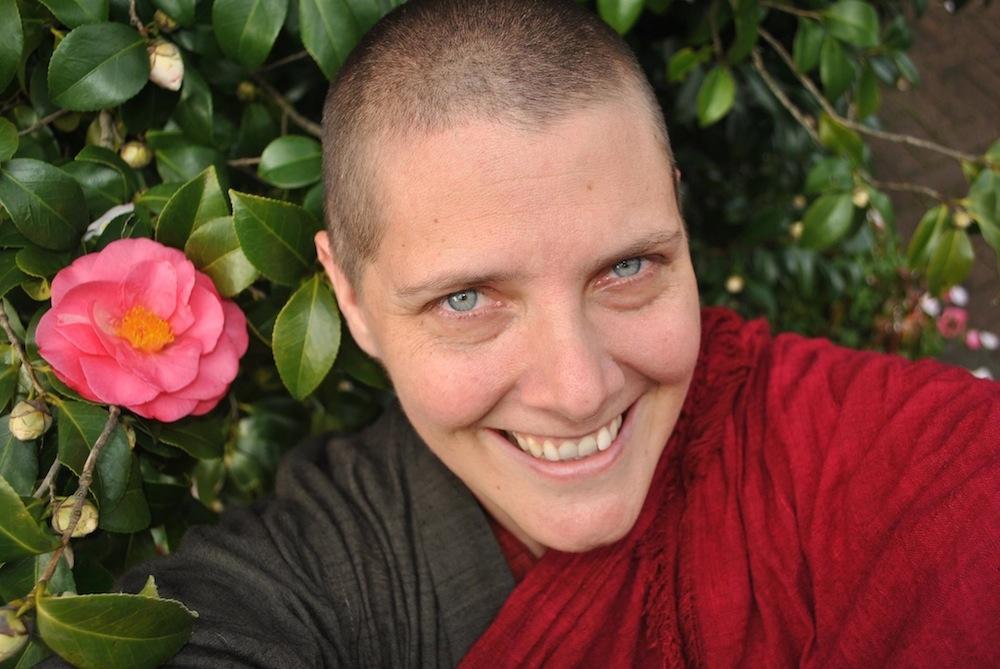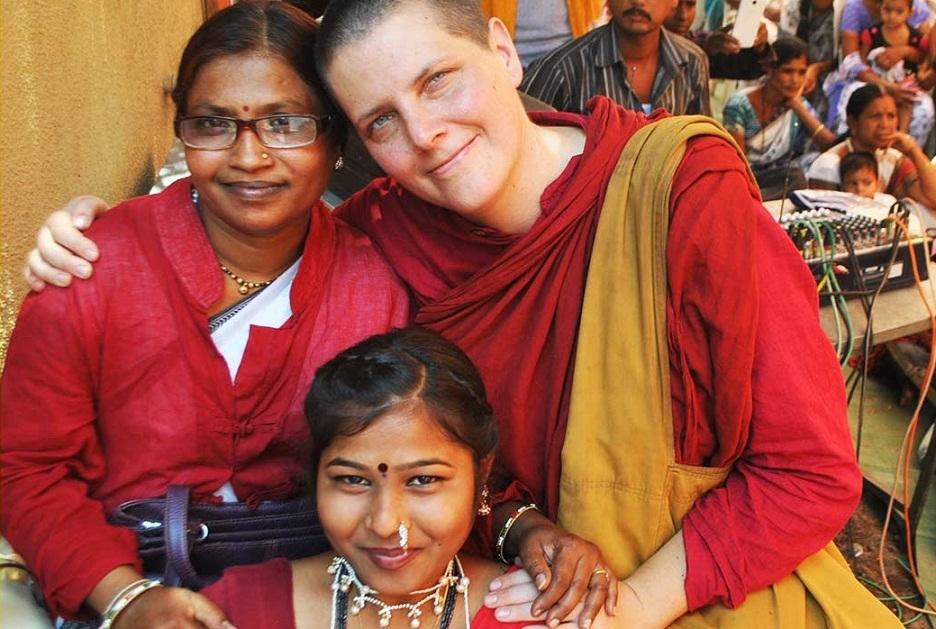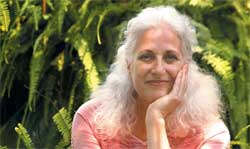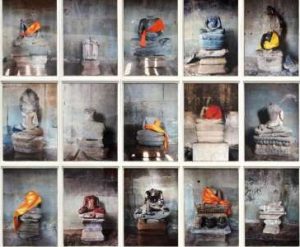
I ordained as a nun in the Tibetan tradition with a heart filled with inspiration. I wanted to become a Buddha and benefit all beings. Tibetan monastics were the happiest people I had seen, or at least it looked that way to me when I traveled through the Himalayas aged 17. Liberating oneself from mental confusion, egotism, and negative emotions, and trying to be a clear mirror for other confused beings too, seemed the best use of my life.
I helped run a Dharma center in Australia for five years as a lay person and as a nun in the final year. My lama was a good monk, but he was afflicted with cultural conditioning. When I ordained at 23, I was entering a world that I knew nothing about—a world whose culture, gender stereotypes, history, and world view were totally opposite to my Western culture. Even on the very day I ordained, I had to take off my robes and go out to work. I knew the purpose of a monastic’s life was to devote oneself to the Dharma, but I went to work because everyone said that our center didn’t have enough money to support Australian monastics (although it has always supported Tibetan monks) and that Westerners didn’t know the traditional practice of supporting the monastic sangha. In 2,600 years of Buddhism, it has never been heard of for a center to charge a monastic rent and offer food to a monastic of one race and not another.
The monastic community was the first democracy in the world. If resources were given to the sangha, which was traditionally composed of both monks and nuns, they were supposed to be distributed equally. Monastics were seen as valuable because they studied the Dharma full time, memorized and practiced it in a way lay people did not have time for, and created a spiritual environment for the latter to take Refuge in and receive spiritual sustenance from. Monasteries were the epicenter of Buddhist learning—places where the Dharma was upheld. I did not know when I ordained that nowadays, nuns receive far fewer donations than monks, that they have to struggle just to get the same education as monks, and that in most traditions they cannot take full ordination. I did not know how rife my own tradition was, despite its many good points, with patriarchy and hierarchy. I never questioned why it was only men who sat on the throne or only Tibetans who were seen as “authentic” practitioners, or why our center raised money for Tibetan men in India and not for Australian monastics who were actually contributing their free labor to keep the center going.
These things only became clear to me when I hit the Buddhist glass ceiling. And that is just what it is—because you can’t see it. I felt somehow demeaned, depressed, trapped. I worked at a job and then came home and worked more for the center. My teacher had little time to offer monastic training to me or to the other Australian monk and nun at the center. I blamed myself for my feeling of heaviness. “I’m not trying hard enough,” I thought. We were frequently told that our suffering was the result of past negative karma and negative emotions. So whatever suffering came, I just accepted it as my own fault. I did not yet see that the idea of karma could be used to maintain an unequal and unhealthy status quo, which meant that those experiencing suffering would blame themselves and not the structural violence that kept them “in their place” and the privileged in power.
Apart from the double standard of supporting Tibetans and not non-Himalayans, I started to see the strong patriarchy of my tradition when a visiting lama told all the baby-boomer generation women in the room: “Female birth is inferior to male birth. You can’t become a Buddha as a woman. Pray to be reborn as a man.” None of the Western women in the room questioned this lama except me. I gave the examples of Jomo Menmo, Machig Labdrön, and the queen of Tibet, Yeshe Tsogyal, who, according to their biographies, had all become Buddhas. “Well, they must have become Buddhas as men and then been reborn as women to help women,” Rinpoche said. To me, this made absolutely no sense.

So, from that moment on, I started reading the original texts—the sutras, going back to the source of the Buddha and the Indian masters. I found texts that said it is the duty of an ordination master and the lay community to provide four requisites to the monastic community (at least those who keep their vows and sincerely practice): robes, food, shelter, and medicine. A master who does not provide these has failed in his sacred duty as abbot and spiritual guide (according to the Vinaya and the Sigalovada Sutta). I also found inspiring biographies of women who had succeeded in attaining enlightenment, despite being oppressed.
After I left the center, I allowed other thoughts that I had been suppressing as blasphemous to arise fully: Why are non-Himalayan monastics any less deserving of support? Why have we been trained to only support Tibetan lamas? I realized that it was not just my bad karma that was creating the situation of marginalization and lack of support I was experiencing. “Letting go” of an issue that eats away at you because you are being discriminated against is not always the most healthy thing for nuns; nor is it healthy for Buddhism. I think it’s time women started questioning why there is no equal representation, why women are treated as “second-class citizens,” and why we as sponsors only support Asian men to study and practice. That doesn’t mean not supporting men, it means supporting equality—Himalayan and non-Himalayan monastics, and women and men, equally. Women need autonomy, and our own places both in Asia and the West to practice and study in where we are not dominated by men or placed in inferior positions, and which are suited to our differing cultures.
Because there is so much emphasis on Guru devotion in Tibetan Buddhism, we sometimes feel afraid to question our teachers. People also misinterpret and confuse the ultimate and relative teachings. I sometimes find Buddhists using the Dharma as a reason why they don’t engage in the world to address situations of poverty, misery, and injustice. Sometimes they quote high-level teachings like Dzogchen or Mahamudra to justify their non-action, and talk about Buddha nature. They say that “everything is perfect and the people who are suffering are just purifying their karma.” One man said, on a post about an ex-“untouchable” family who had been burned alive in caste violence, that the suffering of the world was endless and that we should all just let go into Buddha nature. To me that seemed really insensitive and off the mark. But all the great practitioners I know who have a true understanding of the nature of the illusory appearance of things and interconnectedness rest in that ultimate state whilst actually doing something to help others, too.
In 2007, when I met some Indian Buddhists who had converted from Hinduism to Buddhism to escape the oppressive caste system, I was inspired to share some teachings with them. Very few Buddhists are helping this community or sharing the Dharma with them. They were Dalits, those formerly known as “untouchables,” a large number of whom had converted in 1956 under the leadership of Dr. B. R. Ambedkar. But I quickly found that it would be wrong to teach them about Buddhism when their stomachs were empty and their children dying from sickness. And so Bodhicitta Foundation NGO (India and developing countries) and Bodhicitta Socially Engaged Buddhist Community (India and Australia) were born. We now run a charity that has a girls’ home, a spiritual ashram, and a women’s job training center, and also sponsors children to attend school, changing the lives of some 2,000 people each year. We are also currently fundraising for a RIME center for non-Himalayan monastics in Australia, and have offered scholarships to non-Himalayan monastics in the past.
I was never allowed into Tibetan circles because of the priority Tibetans had placed on preserving their own culture and hierarchy, but the slum people embraced me. I followed the road less traveled. The nun’s life is still meaningful and profound, despite its many challenges, and each day I rise grateful to have committed myself to compassion and the Dharma, to being a daughter of the Buddha.
Watch a video about Ayya Yeshe Bodhicitta’s journey below:
You can help female practitioners by creating practice centers where non-Himalayan nuns can stay, supporting Buddhist education for women, sharing articles, inviting female teachers, creating scholarships, and opening a dialogue with lamas and centers that do not support non-Himalayan women and nuns.
For further information on the Bodhicitta Foundation and the Bodhicitta Socially Engaged Buddhist Community, see the Bodhicitta Foundation website (launching in three weeks), the YouTube video of our charity, and Bodhicitta Socially Engaged Buddhist Community Facebook page. For further resources to support Buddhist women, see Sakyadhita, Thosamling Nunnery, Alliance for Bhikkhunis, and Dhammadharini.











